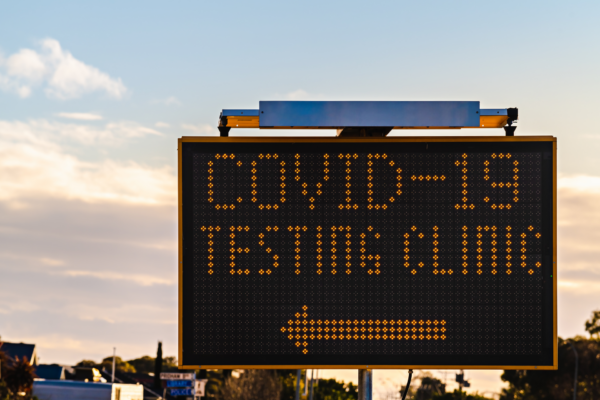EMCs - Electronic Message Centers
Electronic message centers are digital displays used for outdoor advertising and communication.
They come in many forms such as LED electronic message centers, digital display boards, electronic signs and digital message boards. Here are the key points about these outdoor electronic signage solutions.
LED Electronic Message Centers
Use LED technology to display text, graphics, animations and videos
Single line, multi line, full color or tri color LED displays
Highly visible and readable from far away, even in direct sunlight
Programmable via remote control, PC software or web interface to change messages easily
For businesses, schools, churches and public spaces to share information and promotions
Digital Display Boards
Large outdoor digital screens or video walls for big impact visuals
Display static images, scrolling text, videos and live data feeds
Used for advertising, way-finding, event listings and public messaging
High brightness and resolution for best viewing experience
Electronic Signs
General term for all digital signage solutions like LED signs, LCD displays etc.
Remote content update for timely and relevant messaging
Energy efficient, low maintenance and long life
Versatile for commercial use like retail stores, restaurants and corporate branding
Features
24/7 advertising and communication
Content can be updated and programmed easily
Grab attention with visuals and increase brand visibility and foot traffic
Cost effective compared to static signage
Electronic message centers use modern display technology to provide dynamic, attention grabbing and easily updatable digital signage for outdoor use.
They are versatile, visible and programmable for businesses and organizations to communicate with their audience.
Reach More Customers with LED Electronic Signs

LED signs are useful for a range of reasons in reaching out to more customers.
First, they are visible thanks to their brightness even when one is away hence enabling people who may pass by the closed businesses know its exact location throughout the year at any time during the day or night
Secondly; these attract clients` attention by incorporating bright colors, animations as well as digital flashes into them; which makes the light stay on while the dark color is turned off.
Thirdly; they help businesses create their brand identity through the use of colors on these signs which are able to bear any graphics unlike other neon therefore old form signage
Thus promotion communication such as promotion advertisement offers daily specials or any other important event has influenced some customers leading them into impulse buying way while acting as pointing tool that provides customers with direction or steps so as to reach this place.
Compared to conventional neon lights, these boards are a very cheap way of passing information because their maintenance cost is low and their lifetime is longer thus significant for any business person who wants to be seen more often by customers.
All the businesses could primarily benefit from having an LED sign if they need people coming into their shops this could be in terms of visibility, branding promotional communication beside cost-effective rate At the end of it all despite all this perhaps LED signs stand out as an ultimate bridge to customers “ worlds.
Types of EMCs

Electronic message centers (EMCs) can be divided into several major categories, which are as follows:
- Ultra High Resolution 6mm EMCs:
Such EMCs have a very small pixel pitch of six millimeters which results in extremely high clarity images and are most suited for crowds situated very close around 20 feet from it. - High Resolution 10mm EMCs:
This type has got 10mm pixel pitch enabling it to produce sharp images meant only for audiences relatively close up to about 30 feet from where they stand watching them. - Enhanced Resolution 15mm EMCs:
Used nowadays in US because there is an increasing demand by consumers wanting better visual presentations; fourthly they are best suited for audiences who are 50 feet away from these. - Standard Resolution 20mm EMCs:
They have a pixel pitch of 20mm and are quite popular and cost effective for those targeting audiences that are beyond 65 feet.
Moreover, EMCs can be also distinguished by:
- Graphics and Animation Capable Signs
- Text Only Signs
This kind of signs can display basic animations, graphics, logos video clips among others
While they can be simply used to replace manual copy boards they have at most 1-4 lines of text in red colour
EMCs are designed for diverse applications like exterior advertising, transportation systems such as railways, bus stations, intelligent transportation systems among others.
Get Custom Signage with our Digital Display Board

Solutions for Digital Billboards in Different Designs
Digital screens provide an adaptable way for companies to show content clearly and interact with clients. Various custom-made versions are available including:
Outdoor Digital Displays
- Peradventure any person can see digital billboards from far
- Beautiful Architectural Video Walls
- Easily changeable electric messaging boards
Indoor Digital Displays
- Hallways, workspaces, or game locations video walls that ensure audience retention
- Floor standing digital signs used in malls- lobbies or exhibitions areas provide increased visibility
- Kiosks, welcome displays with custom digital menus, advertising showcases in addition to others
These signs can be customized according to your needs as well as company branding requirements.
Imagine Signs has specialists who provide direction when choosing a good screen type depending on the purpose for which it would serve along with creating compelling content thereby ensure total project administration from conception through to assembly and follow up.
Custom digital signage has various advantages like ease in updating information, ensnaring individuals’ sight and staging a remarkable interaction between a seller and his or her consumer.
Whether it’s an outdoor billboard or an indoor interactive screen, there are various ways through which one can convey his point clearly.
Benefits of Electronic Message Center Signs

Main advantages of electronic message center (EMC) signs for companies are listed below:
- Raised Visibility and Attention Grabbing:
Visible throughout the day and night even when the sun is directly above them, EMCs utilize bright LED lights. Their dynamic displays which constantly change will draw attention from those walking past. - Versatile and Customizable Messaging:
For instance, businesses can freely adjust remote messages, graphics and animations in real time so as to communicate timely information such as promotions or events. - Persistent Presence:
24 hours a day throughout the week EMCs are on to make sure that your enterprise has a visual identity even during its closure. - Medium of Advertisement with Low Cost:
Using EMCs is cheaper and more beneficial compared with old style posters which do not change frequently hence not reaching out to clients every time they pass by. - Low Maintenance and Weatherproof Features:
They are made in such a way that EMCs are capable of withstanding all types of climate changes without needing constant care ensuring less money spent on operation in the long run.
The new role that EMCs are playing is turning the business site to act like some popular landmark around town by converting its appearance from one that is dull but attractive enough into something striking because it possesses lights that blink intermittently or move around continuously.
Therefore electronic message center signs provide flexibility attractiveness reduced cost ways for improving visibility, updating messaging, and engaging customers all days round in businesses.
Frequently Asked
Questions
What is an EMC signage?
An EMC (Electronic Message Center) is a type of digital signage that uses LED technology to display changeable messages, graphics, and animations. EMC signage provides businesses and organizations a dynamic, flexible, and impactful way to display their messaging and branding to customers and the public.
What is an EMC board?
An EMC board is an Electric and magnetic compatibility board which is a printed circuit board designed to minimize electromagnetic interference (EMI) and be effective in its electromagnetic environment.
The main aim of an EMC board is to prevent other devices from causing it unwanted electromagnetic emissions and to prevent other devices from transmitting unwanted signals to it during operation.
Key Characteristics of an EMC Board
One reliable way in which electromagnetic energy interference can be reduced or done away with between systems is by using an EMC board as they are designed such that they do not produce various types of electromagnetic energy.
The board functions under hostile electromagnetic conditions without any problem because it is supposed to be resistant to electromagnetic interference from non-intended sources.
The design seeks to minimize electromagnetic coupling between components and other devices that can cause interference.
This calls for a properly grounded PCB.
Electronics are always better when designed within a few centimeters of each other.
The design guarantees that signals are not distorted through signal path control like impedance matching, defined path lengths and transmission lines.
Noise and electromagnetic radiation are minimized using differentiating capacitors at the output terminal of a microprocessor or integrated circuits for filter designs.
The board has to be regulated according to electromagnetic standards for emissions according to rules put up by various authorities like The Federal Communications Commission (FCC) and European International Special Committee on Radio interference (CISPR).
By following these guidelines, an EMC board can ensure reliable operation in various electromagnetic environments, reducing the risk of interference and ensuring compliance with regulatory standards.
How much does it cost to make EMC board?
The cost of creating an EMC (Electromagnetic Compatibility) compliant circuit board could significantly vary depending on Location and Expertise of EMC Test Lab.
In low-cost countries using a non-accredited EMC lab with low expertise could help minimize costs whereas in Developed Countries Accredited labs tend to be more expensive.
Also Recap number of Operation Modes
l Moreover Pre-Compliance vs Full Compliance Testing also affects the total expenditure
l Typically, pre-compliance testing can cost anything from $300 to $800 for 2-3 days in the lab Full compliance testing at an accredited lab is much more expensive, often starting around $7-8k USD for each product.
Next on design changes
At times, boards are over engineered for EMC pass only for layers to be reduced later to save cost leading to non-compliance Any design changes after initial compliance testing needs to be carefully assessed
Manufacturers may incur from several hundreds of dollars to more than one thousand US dollars on average for pre-compliance testing or even above $700 for full compliance when the product involved is complex and it’s done in an accredited lab. Careful planning and pre-compliance testing are therefore considered important in controlling EMC costs due to minimizing design changes.
What is the difference between LED and digital signs?
Definition: This is a non-specific term denoting varying forms of interactive displays that make use of different types of media such as LCD screens, video walls, menu boards, and LED displays.
Function: Digital signs are useful tools for providing relevant content to the audience while they are in public spaces and under central management.
Types: It includes digital noticeboards consisting of menu kiosks, videos walls, LCTV screens as well as some led signs.
LED Signs
Definition: These are digital signs that make use of light-emitting diodes (LED) as pixels, forming pictures, text or videos with them.
Features: They are highly visible from long distances due to their brightness factor which is high enough and has very clear colors than others do not have. Mostly they are used as billboards for advertising purposes or to give directions on streets.
Uses: Normally these signs can be seen in shops, billboards near roads, buses either trailing them or when refilling fuel at petrol stations and on highways showing various messages.
The difference between LED and digital signs is that LED signs use light-emitting diodes as pixels while digital signs use a multitude of other display technologies.
LED signs have more brightness than digital signs making them ideal for outdoor advertising and public information dissemination.
